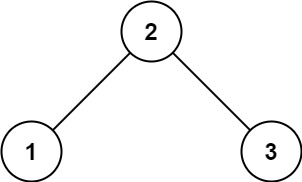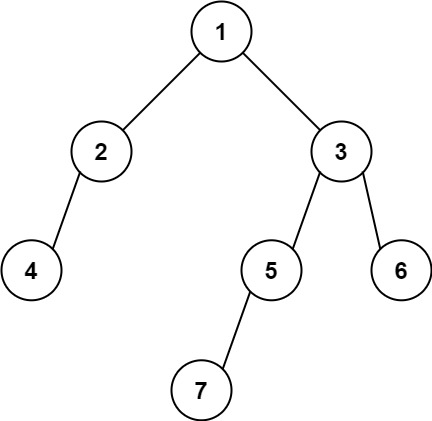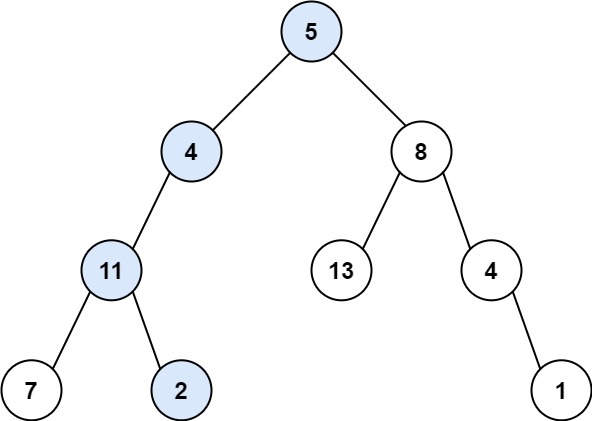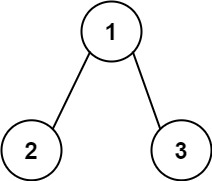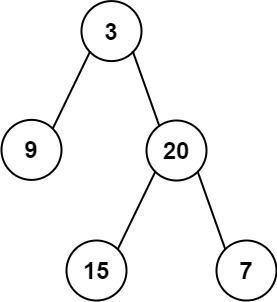Leetcode Day 14 - Binary Tree: Path and Construction Problems
Focuses on finding specific nodes or values in binary trees, such as the bottom-left value and path sums. Also covers reconstructing binary trees from inorder and postorder traversal.
Binary Tree
| Diff | Problem | Python | Java |
|---|---|---|---|
 | 513 Find Bottom Left Tree Value | ✅ | |
 | 112 Path Sum | ✅ | |
 | 106 Construct Binary Tree from Inorder and Postorder Traversal | ✅ |
Find Bottom Left Tree Value
Given the root of a binary tree, return the leftmost value in the last row of the tree.
Example 1
1
2
Input: root = [2,1,3]
Output: 1
Example 2
1
2
Input: root = [1,2,3,4,null,5,6,null,null,7]
Output: 7
Solution
Python
1
2
3
4
5
6
7
8
9
10
11
12
13
14
15
16
17
18
19
20
21
22
23
24
25
26
27
28
class Solution(object):
def findBottomLeftValue(self, root):
def find(node):
if node is None:
return None, 0
if node.left is None and node.right is None:
return node.val, 1
if node.left is not None:
left, left_depth = find(node.left)
left_depth += 1
if node.right is None:
return left, left_depth
else:
right, right_depth = find(node.right)
right_depth += 1
if right_depth > left_depth:
return right, right_depth
else:
return left, left_depth
right, right_depth = find(node.right)
return right, right_depth + 1
re, temp = find(root)
return re
Path Sum
Given the root of a binary tree and an integer targetSum, return true if the tree has a root-to-leaf path such that adding up all the values along the path equals targetSum.
A leaf is a node with no children.
Example 1
1
2
3
Input: root = [5,4,8,11,null,13,4,7,2,null,null,null,1], targetSum = 22
Output: true
Explanation: The root-to-leaf path with the target sum is shown.
Example 2
1
2
3
4
5
6
Input: root = [1,2,3], targetSum = 5
Output: false
Explanation: There two root-to-leaf paths in the tree:
(1 --> 2): The sum is 3.
(1 --> 3): The sum is 4.
There is no root-to-leaf path with sum = 5.
Example 3
1
2
3
Input: root = [], targetSum = 0
Output: false
Explanation: Since the tree is empty, there are no root-to-leaf paths.
Solution
Python
1
2
3
4
5
6
7
8
9
10
11
12
13
14
15
16
17
18
19
20
21
22
23
class Solution(object):
def hasPathSum(self, root, targetSum):
def find(node,s):
if node is None:
return False
if node.left is None and node.right is None and node.val == targetSum - s:
return True
s += node.val
if node.left is not None:
if find(node.left, s):
return True
if node.right is not None:
if find(node.right,s):
return True
return False
return find(root,0)
Similar Questions
| Diff | Similar Questions | Python | Java |
|---|---|---|---|
 | 113 Path Sum II5 | ||
 | 437 Path Sum III6 | ||
 | 124 Binary Tree Maximum Path Sum7 |
Construct Binary Tree from Inorder and Postorder Traversal
Given two integer arrays inorder and postorder where inorder is the inorder traversal of a binary tree and postorder is the postorder traversal of the same tree, construct and return the binary tree.
Example 1
1
2
Input: inorder = [9,3,15,20,7], postorder = [9,15,7,20,3]
Output: [3,9,20,null,null,15,7]
Example 2
1
2
Input: inorder = [-1], postorder = [-1]
Output: [-1]
Solution
Python
1
2
3
4
5
6
7
8
9
10
11
12
13
14
15
16
class Solution(object):
def buildTree(self, inorder, postorder):
def construct(inorder, postorder):
if not inorder:
return None
mid = postorder.pop()
i = inorder.index(mid)
right_node = construct(inorder[i + 1:], postorder)
left_node = construct(inorder[:i], postorder)
return TreeNode(mid, left_node, right_node)
return construct(inorder, postorder)
Similar Questions
| Diff | Similar Questions | Python | Java |
|---|---|---|---|
 | 105 Construct Binary Tree from Preorder and Inorder Traversal10 |
Reference
Leetcode-513 Find Bottom Left Tree Value: https://leetcode.com/problems/find-bottom-left-tree-value/description/. ↩︎
代码随想录-找树左下角的值: https://programmercarl.com/0513.找树左下角的值.html. ↩︎
Leetcode-112 Path Sum: https://leetcode.com/problems/path-sum/description/. ↩︎
代码随想录-路径总和: https://programmercarl.com/0112.路径总和.html. ↩︎
Leetcode-113 Path Sum II: https://leetcode.com/problems/path-sum-ii/description/. ↩︎
Leetcode-437 Path Sum III: https://leetcode.com/problems/path-sum-iii/description/. ↩︎
Leetcode-124 Binary Tree Maximum Path Sum: https://leetcode.com/problems/binary-tree-maximum-path-sum/description/. ↩︎
Leetcode-106 Construct Binary Tree from Inorder and Postorder Traversal: https://leetcode.com/problems/construct-binary-tree-from-inorder-and-postorder-traversal/description/. ↩︎
代码随想录-从中序与后序遍历序列构造二叉树: https://programmercarl.com/0106.从中序与后序遍历序列构造二叉树.html. ↩︎
Leetcode-105 Construct Binary Tree from Preorder and Inorder Traversal: https://leetcode.com/problems/construct-binary-tree-from-preorder-and-inorder-traversal/. ↩︎
